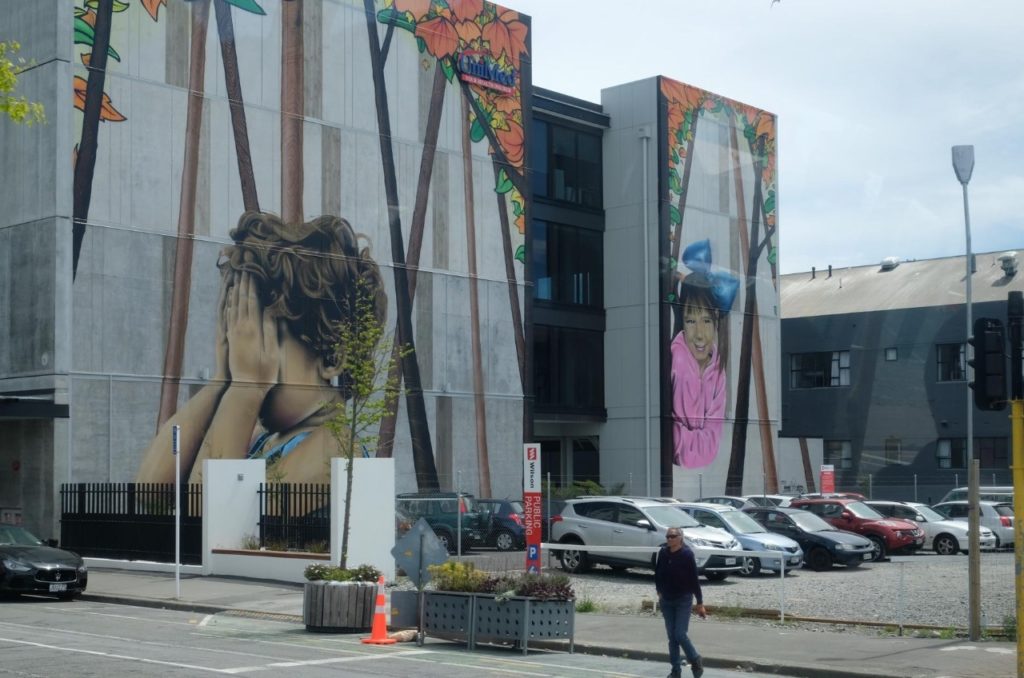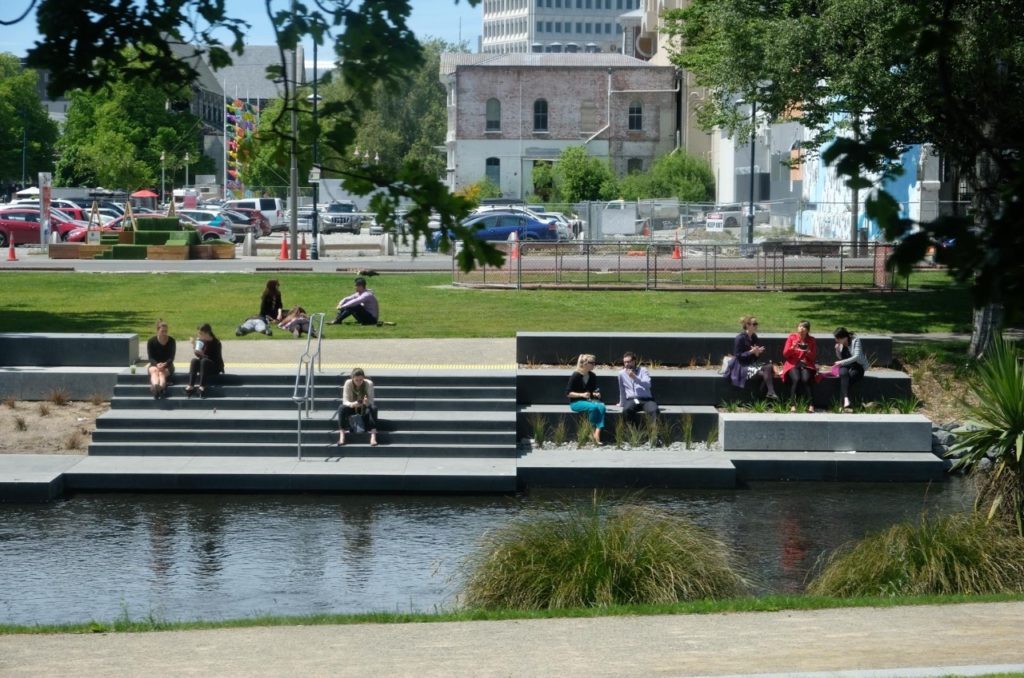Christchurch, New Zealand
It’s easy to forget that New Zealand lies atop an active thermal hot spot, part of the Ring of Fire that encircles the Pacific Ocean. The people of Christchurch didn’t think much about it either. They didn’t know that the city is situated on at least two fault lines.
Christchurch, New Zealand’s second largest city (400,000 population out of 4+ million in all of New Zealand) was hit by a magnitude 7.1 earthquake on December 4, 2010. No deaths resulted but significant damage to buildings in the central business district and elsewhere did occur. Then, after almost daily aftershocks, on February 22, 2011 a magnitude 6.3 earthquake took 185 lives and did even more damage.
Our mission today was to learn about the earthquake, the damage that was done and especially the steps that are being taken to recover from the disaster.
Christchurch has always been the most British of all New Zealand cities. It is home to the oldest school in New Zealand, Christ’s College Canterbury, founded in 1840. We learned today that students began their studies in Christ’s College while still on the ship sailing from England. The focal point of the Central business district is the Christchurch Cathedral. Construction started in 1864 and the place wasn’t completed until 1904. It was badly damaged, probably to point of no return.
Members of the congregation want to tear down and rebuild. Members of the broader community want to restore at least the exterior to maintain the city’s link with its past. What to do? In fact the city has been having a debate, some would say an endless debate, about the layout of the reconstructed city. One thought is to create focus points for different activities – government, arts, business, etc. The city selected a site for a downtown rugby stadium; the recently elected mayor said no, the rugby facility shouldn’t be in the Central business district. It takes up too much room for something that is only used a few times during the year. The subject is back under review.
All of this we learned from our guide on the Red Bus Christchurch Rebuild Tour. The commentator was a young fellow, an employee of the Canterbury Museum, who was born in Boston and moved to Christchurch with his parents when he was 12. His folks (originally from Maine) went back 12 years ago but he stayed behind. He grew up in the city and knows it as it was before and as it is now.
The rebuilding process is massive, slow and expensive. Billions have been spent so far; the process is maybe half complete. Our tour showed us projects on virtually ever street corner. The city never experienced a recession like the rest of the world; construction spending led to over employment and an influx of workers from around the world.
We were impressed with the spirit and energy that the city seems to be putting into its recovery process. The Cathedral seems to be the real sticking point due to its central location and importance as the city’s image. It will be interesting to see what the city looks like 10 years from now.
One crucial objective is to restart the tourism business, which was brought to a virtual halt after the quake. A question in my mind is how the architecture of the new city will evolve. Will there be a consistent theme and feel to each section of the city or will it rebuild in a hodge-podge fashion. Only time will tell.
We met a lady at the ice cream stand who was walking her dog. We had a nice long conversation with her. She noted that reconstruction of residential housing was not moving forward as fast as it should. Insurance companies have dragged their feet in making settlements. People still live with inadequate water and sewer services.
Fortunately, the day proved to be absolutely gorgeous, a welcome relief after yesterday’s gloom, rain and high winds (and rough seas). We drove down along the coast from Kaikoura in about 2 1/2 hours. The GPS found the museum and we found a car park immediately across the street from the museum and our bus location. After the 90 minute tour we had lunch at the museum’s coffee shop and walked back down to Cathedral Square and returned to the museum. Finally we took a 45 minute stroll through the botanical gardens. Then, back in the car and a 30 minute drive to the suburbs to our B&B for tonight. Lovely place and we have a line on a restaurant our friends Jean and David recommended.
Tomorrow it’s off across the Southern Alps to the west coast. Unfortunately the weather forecast calls for rain for the next several days. Oh well, we’ll soldier on and count on the weather man being wrong once again.



































